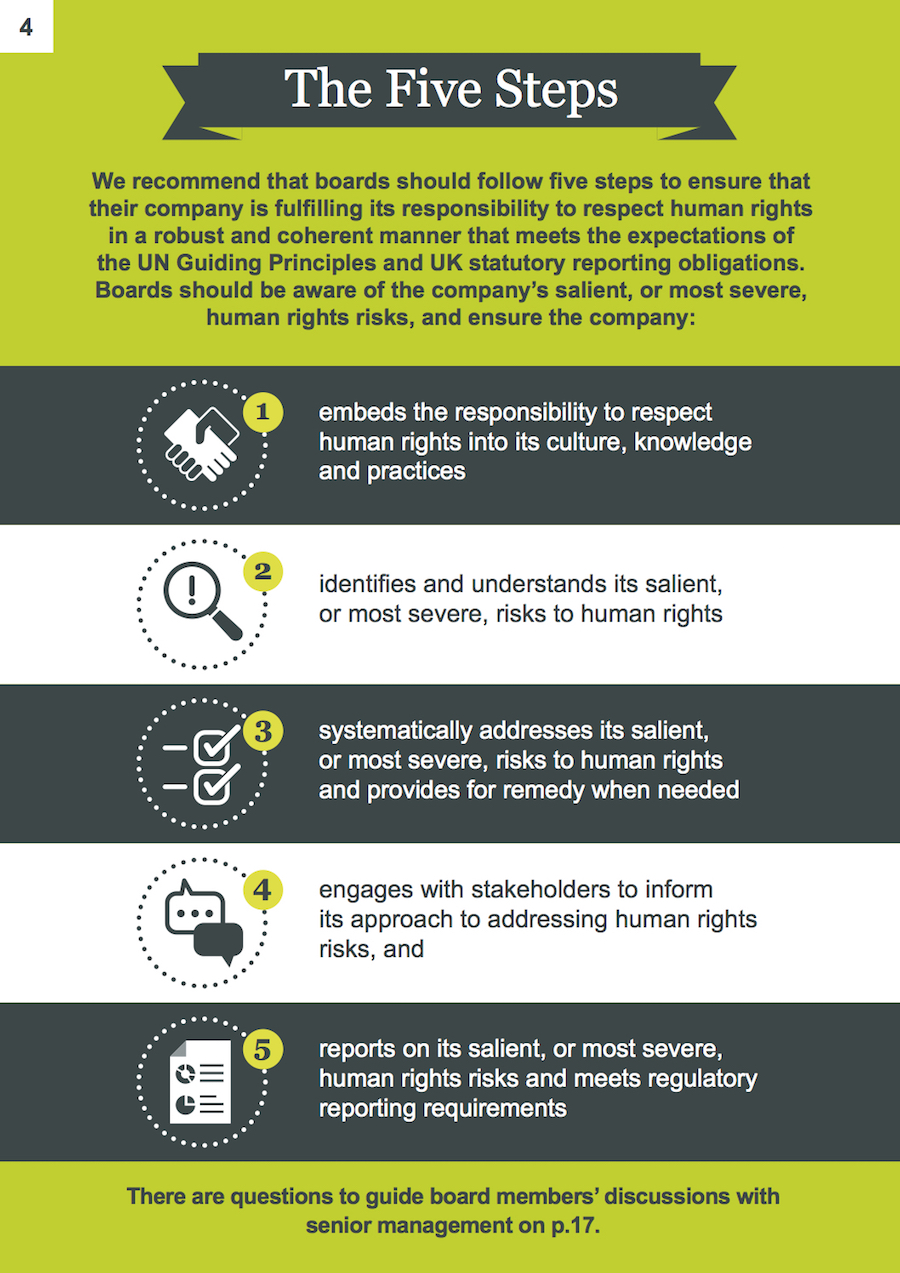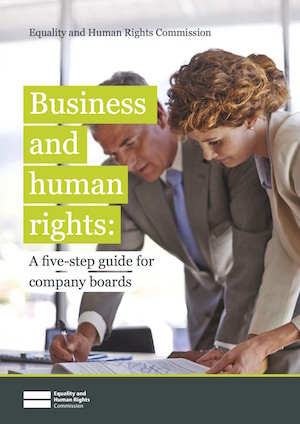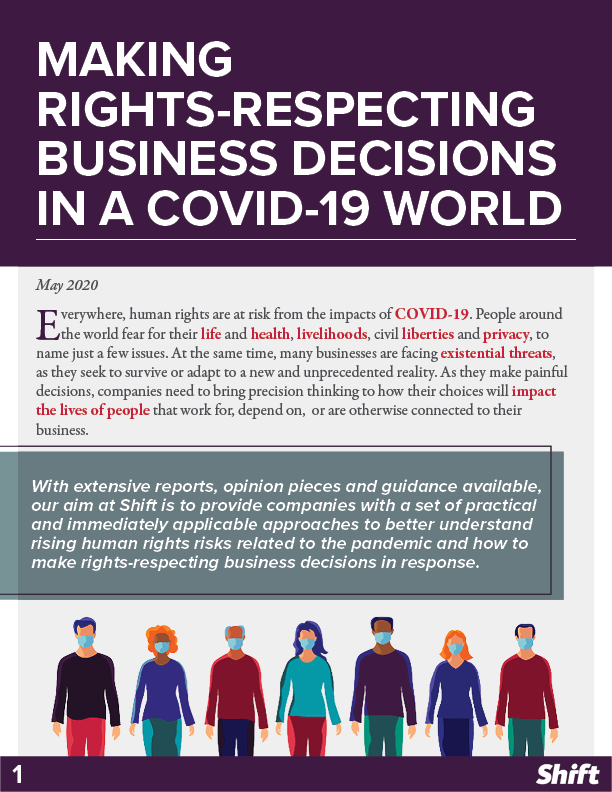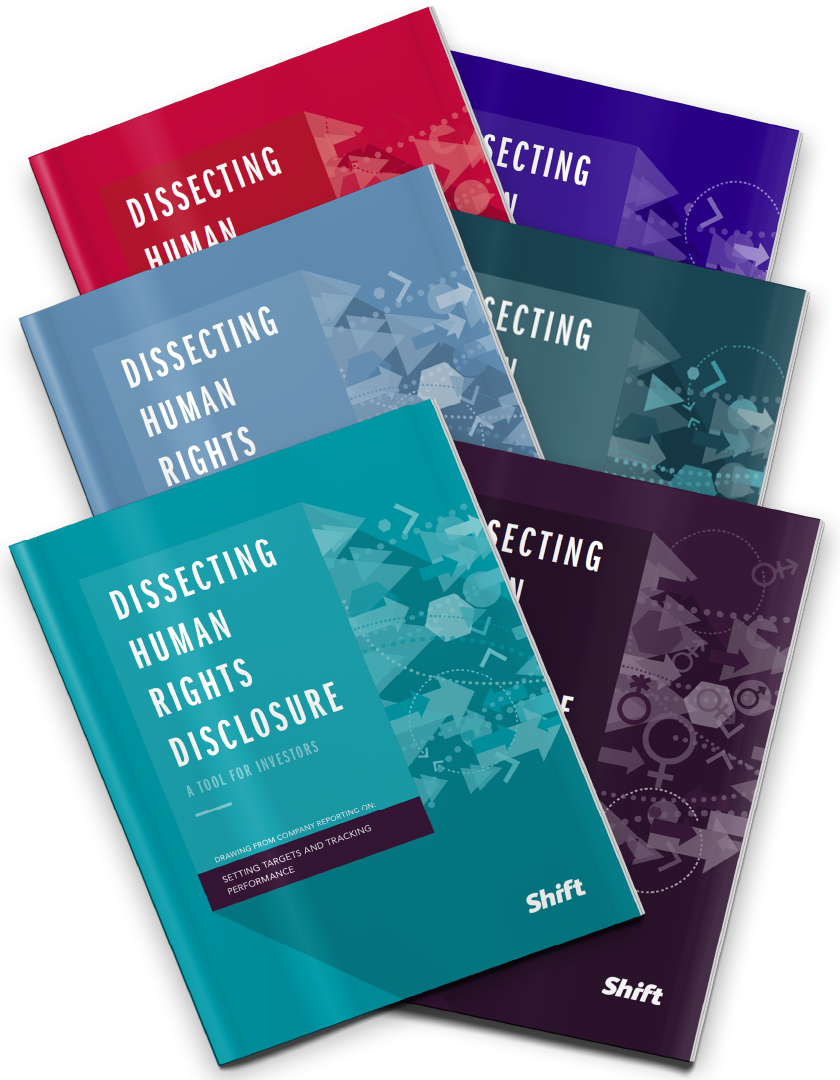Also see: Our Viewpoint | Launch press release
This resource was developed by Shift and the UK Equality and Human Rights Commission. It reflects input from directors and other senior corporate officers. The summary below is excerpted from the resource.
What is the aim of this publication?
This guide is primarily for boards of companies, particularly those in the UK (it is published by the UK Equality and Human Rights Commission, the National Human Rights Institution of the UK). It sets out five steps boards should follow to satisfy themselves that their companies identify, mitigate and report on the human rights impacts of their activities. These steps will also help boards to reflect their leadership and fiduciary duties.
This guide also provides advice on how boards can meet the UN Guiding Principles on Business and Human Rights, the global standard, which outline the role of business and governments in respecting human rights. The Guiding Principles do not create any new international legal obligations on companies, but they can help boards to operate with respect for human rights and meet their legal responsibilities set out in domestic laws.
The five steps
[The Equality and Human Rights Commission] recommends that boards should follow five steps to ensure that their company is fulfilling its responsibility to respect human rights in a robust and coherent manner that meets the expectations of the UN Guiding Principles and UK statutory reporting obligations. Boards should be aware of the company’s salient, or most severe, human rights risks, and ensure the company:
- Embeds the responsibility to respect human rights into its culture, knowledge and practices;
- Identifies and understands its salient, or most severe, risks to human rights;
- Systematically addresses its salient, or most severe, risks to human rights and provides for remedy when needed;
- Engages with stakeholders to inform its approach to addressing human rights risks;
- Reports on its salient, or most severe, human rights risks and meets regulatory reporting requirements.

Human rights due diligence: questions for boards to ask of their executive teams
(see p.17 of the resource)
Board members may find these questions useful to guide discussions with senior management about the company’s salient human rights issues.
1. What is the company doing to make respect for human rights a part of how it does business?
- Do company functions that pose risks to human rights have sufficient resources and responsibility to manage and mitigate those risks?
- Is there a senior manager actively leading on human rights in the company?
- Are there procedures for human rights risks and impacts to be escalated to the board?
- How are staff encouraged to raise human rights risks and take steps to mitigate and manage them? How are staff rewarded for doing so?
- What indicators assess the effectiveness of human rights risk management processes?
- Does a member of the executive team have expertise on human rights? Is there a board champion for human rights?
2. How does the company know what negative impacts it may have on people’s human rights?
- Does the company assess its human rights risks across its operations and supply chain, geographic locations and decision making processes?
- What has the company identified as its salient human rights issues and on what basis? Has it drawn on the experience and knowledge of a broad range of stakeholders?
- How do senior management know whether the company’s policies and processes related to human rights are effective?
3. What steps is the company taking to reduce and mitigate its risks?
- How does the company use its influence to reduce risks to human rights in its supply chain and other business relationships?
- What does the company do to ensure it is not contributing to human rights impacts through its own actions and decisions?
- Does the company work with others in the industry, or with multi-stakeholder groups to address human rights risks?
- What is the company doing to provide remedy if its own actions or decisions lead to impacts on human rights?
4. How does the company engage with stakeholders to help it understand and address human rights risks?
- Does the company engage with a broad range of stakeholders across its business to inform its understanding of human rights risks and its progress in reducing these risks?
- How do people inside or outside the company raise concerns about human rights impacts, and how does the company know whether these channels work?
5. Does the company explain which human rights issues it is reporting on and why?
- Does the company provide sufficient information to explain its human rights challenges and provide examples of how its actions are improving human rights outcomes?
- Does the report include indicators or other metrics to provide evidence of progress over time?
- Do senior management have enough information to meet regulatory reporting requirements?




